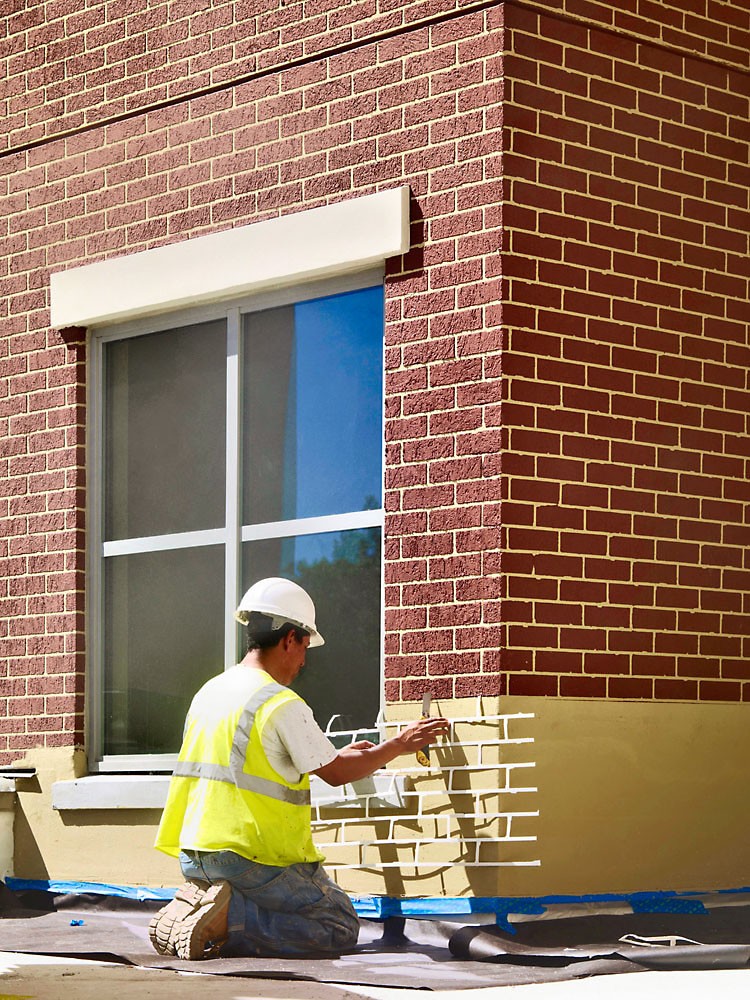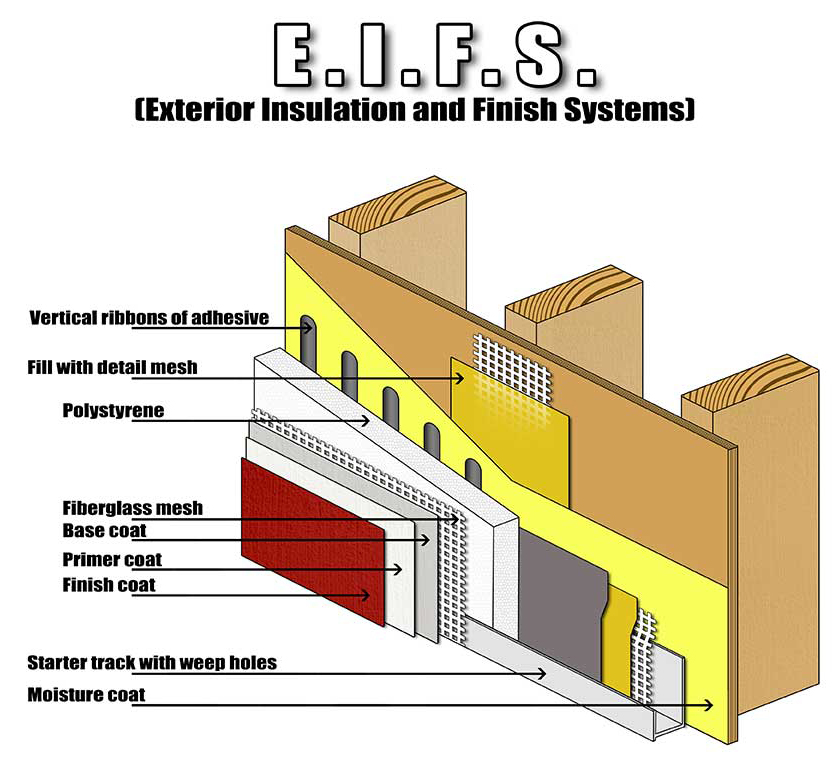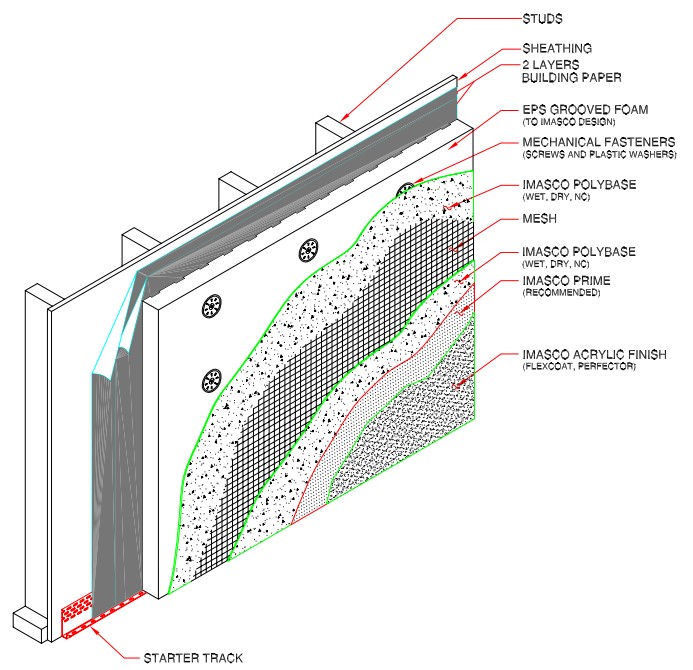


Exterior Insulation and Finish System (EIFS)
EIFS, as a nonload bearing, exterior wall cladding system that consists of, but not limited to:
- An air/water-resistive barrier (WRB) that covers the substrate
- A drainage plane between the WRB and the insulation board that is most commonly achieved with vertical ribbons of adhesive applied over the WRB
- Insulation board typically made of expanded polystyrene (EPS) which is secured with an adhesive or mechanically to the substrate
- Glass-fiber reinforcing mesh embedded in the base coat
- A water-resistant base coat that is applied on top of the insulation to serve as a weather barrier
- A finish coat that typically uses colorfast and crack-resistant acrylic co-polymer technology.
Keep in mind that this layering can change depending on builder's preferences. Wall's insulation can be greatly enforced by different techniques and by adding more layers of WRB, mesh, coatings as well as using insulation material with higher R-Value.
LEED (Leadership in Energy and Environmental Design) is an internationally recognized building standardization that mainly concentrates on sustainability of a building through innovative but, not really expensive construction techniques. Many high scope Canadian companies are LEED-Certified but a project alone can be LEED-Specific as well. Many EIFS companies offer LEED-Certified systems like Dryvit, Imasco IFC. We have proficient knowledge and personnel that can handle your LEED-Certified project.
R-Value is the rate of resistance of an insulation material in which heat flow through. Therefore, higher R-Value will provide better insulation.

A brick-replicated EIF system



Some advantages of EIF System:
- EIFS is better insulator because of multiple layers of applications, thus, better energy saver in modern buildings through the use of CI (Continuous Insulation) and continuous air/water barrier.
- Synthetic stucco does not fade or yellow away after continuous exposure to sunlight and protects its true colour all the time. The acrylic surface looks clean and fresh even after rain. In case of dust and soil, the surface can be hosed down without worry of peeling.
- Weather with extremely fluctuating temparature can cause expansion and contraction on walls which can create crack and holes. The EIFS assembly is made of all flexible components that gives greater resistance to cracks.
- EIFS assemblies have superior drainage capability by the fact that it creates lower humidity.
- EIFS have passed the major fire resistance tests that are required by the building codes.
- EIFS offers aesthetic finishes that are identical to tiles, blocks, granite, limestone etc. allowing the creation of less heavy buildings. Cornices, curves, arches and other decorative shapes are easy and economical to fabricate on wall claddings using EPS foam
Typical mechanical EIF system.
Typical adhesive EIF system
Channels, both on the wall and on panel, help to achieve drainable EIF system. This system helps moistened water to drain or evaporate through channels during hot and cold seasons.
There are several companies that offer their own EIF system along with their components and product brands in Canada such as:
- ADEX Systems Inc.
- Sto Industries Canada Inc.
- BAFS Senergy Wall Systems
- Dryvit Systems Canada.
- Durabond Products Ltd.
- DuRock Alfacing International Ltd.
- Home
-
About Us
About Company About People
- Services
Metal cladding Aluminum Composites (ACM) Fibre Cement Cladding Stucco EIFS Woodpecker Solutions Stone Veneer Moulding Parging Brick Veneer CMUs Tiles Painting Wallpaper Repairs Renovations- Projects
Dropdown Menu inside a Navigation Bar
Hover over the "Dropdown" link to see the dropdown menu.

- Services